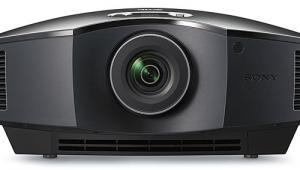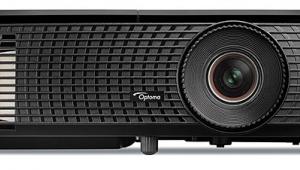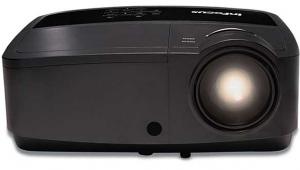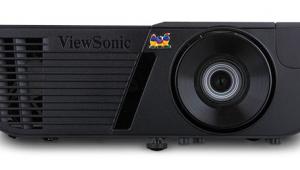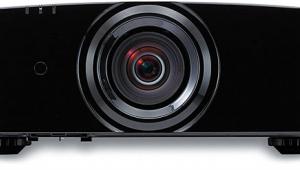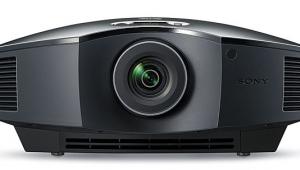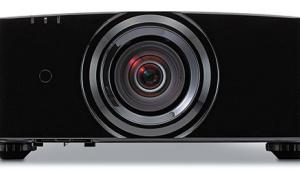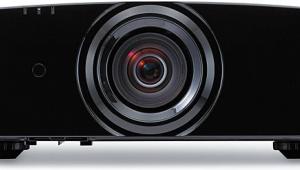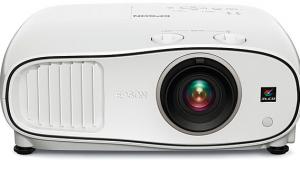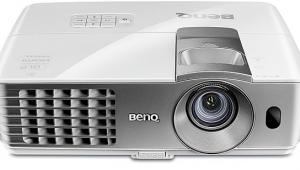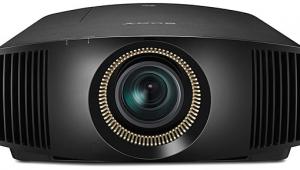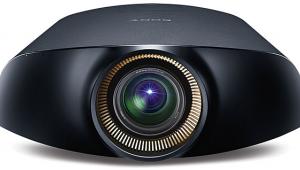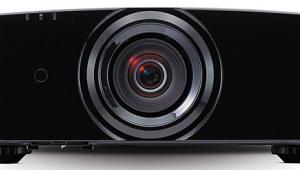Mitsubishi HC7800D 3D DLP Projector HT Labs Measures
Full-On/Full-Off Contrast Ratio: 3,646:1
All of the testing and viewing of the Mitsubishi HC7800D was done with at least 100 hours on the projection lamp, and the 2D contrast ratio measurements and 3D calibrations were performed with just over 200 hours on the lamp. Except where noted, the measurements presented here are for 2D.
The full-on/full-off contrast ratio result above was taken under the following conditions: the projector set up to produce a 96-inch-wide picture on a Stewart StudioTek 130 screen (gain 1.3). The projector-to-screen throw distance was 13 feet, 11 inches. The lamp was on Standard (high), the iris on Auto 2, the contrast on 0, and the brightness on 10. The visible video brightness levels in these settings ranged from 16 to 252. The peak white level was 18.23 foot-lamberts, and the black level was 0.005 ft-L.
If you’ve read the main review, you’ll note that for most of my actual viewing I used a 101-inch-wide Elite screen (gain 1.1) and not a StudioTek. The equivalent full-on/full-off contrast ratio on that screen (at a slightly shorter throw distance but the same projector settings) was 3,838:1 (0.004 ft-L black, 15.35 ft-L peak white). The measured black levels were well within the accuracy range of our Minolta LS-100 luminance light meter, which was used for these contrast measurements.

The color calibration results shown here were also taken on the 101-inch-wide Elite screen. The pre-calibration 2D gray scale Delta E averaged a respectable 2.06 and never higher than 2.59. Postcalibration, the average was 1.34. The latter remained below 1.0 from 20 percent to 80 percent, increased to 1.47 at 90 percent, but was a 7.6 outlier at 100 percent. Was this actually worse overall than the Before Calibration result? Perhaps, but we could argue the point. The projector’s color management system was a little tricky to use and could not optimize all of the colors, but it did produce an improvement from the out-of-box condition, as may be seen in the CIE charts.

The overall color Delta E before calibrating averaged 5.65, improving to 2.1 post-calibration. The 2D gamma, in the Cinema Gamma mode, averaged 2.26.(Delta E is a figure of merit showing how close the result is to the standard D65 white point. Most experts recommend a Delta E value of 4 or less, although some suggest a Delta E of no more than 3 for a visibly ideal result.)

Only the RGB Post-Calibration chart is shown for 3D. The gray scale Delta E remained below 3.66 under 70 percent and 4.92 at 80 percent but soared to 31.47 at 100 percent. This is simply a reflection of the loss of red at the top end from the compromises necessary to obtain a satisfactorily bright 3D picture. The post-calibration 3D color Delta E averaged 3.02, and the gamma in the 3D Gamma mode averaged 1.86.—TJN
